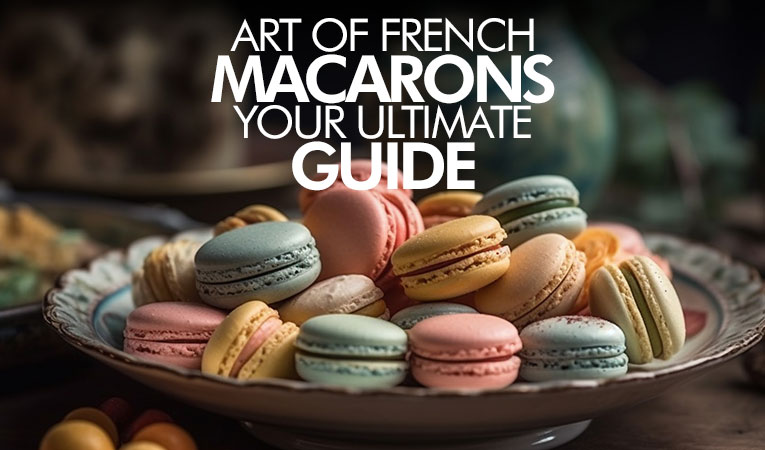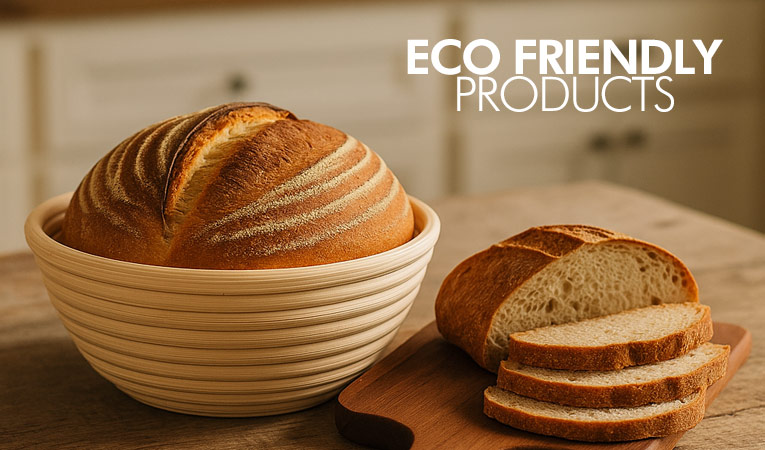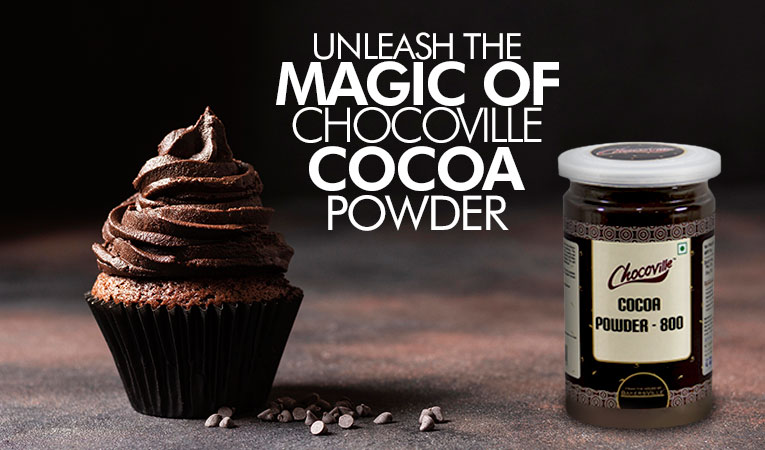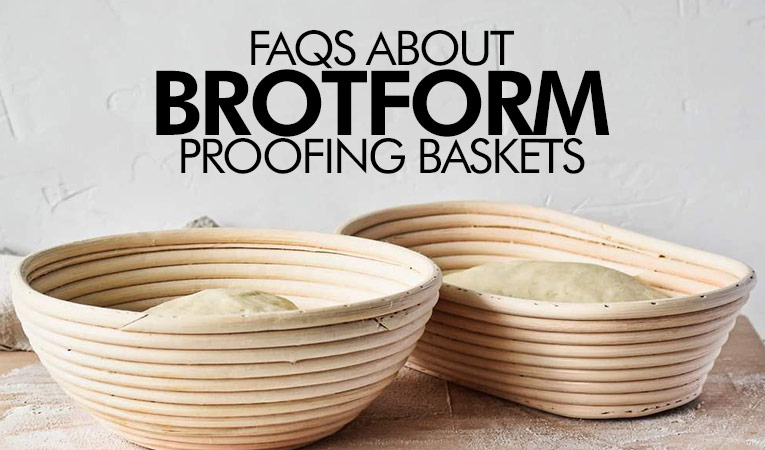Mastering the Art of French Macarons: Your Ultimate Guide
21-06-2023

French macarons are elegant and delectable treats that require precision and skill to perfect. In this ultimate guide, we will provide you with everything you need to know to master the art of French macarons. From understanding the science behind macaron-making to step-by-step instructions, troubleshooting tips, creative flavor ideas, and advanced techniques, this comprehensive guide will equip you with the knowledge and skills to create stunning macarons that will impress both your eyes and taste buds.
Understanding the Science of French Macarons
Mastering the art of French macarons goes beyond following a recipe. It's essential to comprehend the science behind these delicate treats to achieve consistent and impeccable results. Here are key insights into the scientific principles of macaron-making:
- Ingredient Ratios: Almond flour and powdered sugar play a vital role in the texture and stability of macaron shells. The finely ground almonds provide structure and contribute to the chewy texture, while the powdered sugar adds sweetness and helps maintain the macaron's shape.
- Meringue Formation: The creation of a stable meringue is crucial in macaron-making. Egg whites, whipped to a precise consistency with granulated sugar, provide the structure and stability needed to achieve the characteristic domed shape and delicate texture of macarons.
- Macaronage Technique: The macaronage technique, the process of combining the dry ingredients with the meringue, is critical for achieving the desired smooth and glossy batter. Proper macaronage ensures the dry ingredients are fully incorporated while maintaining the airiness of the meringue, resulting in a balanced texture.
- Resting and Drying: Allowing the piped macarons to rest before baking is a crucial step. This resting period forms a dry skin or "feet" on the macarons, which helps them rise evenly during baking. The drying process ensures that the macarons retain their shape, develop a delicate shell, and create a delightful contrast between the crisp exterior and soft interior.
Understanding the scientific principles behind French macarons empowers you to troubleshoot issues and make adjustments in your recipe and technique. With this knowledge, you'll be well-equipped to embark on your macaron-making journey and achieve consistent, picture-perfect results every time.
Essential Ingredients and Tools
To embark on your journey of creating perfect French macarons, it's essential to gather the necessary ingredients and tools. Here's a breakdown of what you'll need:
Ingredients:
- Almond Flour: Choose a high-quality almond flour that is finely ground and blanched. The texture and quality of the almond flour significantly impact the smoothness and structure of the macaron shells.
- Powdered Sugar: Also known as confectioners' sugar, powdered sugar helps provide sweetness and a smooth texture to the macaron shells.
- Granulated Sugar: Granulated sugar is used to create a stable meringue, contributing to the structure and stability of the macarons.
- Egg Whites: Fresh and high-quality egg whites are crucial for achieving a stable meringue. Consider using aged egg whites, as they tend to provide better stability and consistency.
- Flavorings and Add-Ins: To add a burst of flavor and creativity to your macarons, consider using extracts, flavorings, or add-ins like cocoa powder, matcha powder, or food coloring. These optional ingredients can take your macarons to the next level.
Tools:
- Kitchen Scale: Accurate measurements are key to successful macarons. A kitchen scale allows you to measure the ingredients precisely, ensuring the right ratios for optimal results.
- Food Processor: Use a food processor to blend the almond flour and powdered sugar together. This process helps achieve a fine texture and ensures proper incorporation of the dry ingredients.
- Stand Mixer or Hand Mixer: Whipping the egg whites to form a stable meringue requires the use of a stand mixer or hand mixer. These tools save time and effort while ensuring consistent results.
- Piping Bag with a Round Tip: A piping bag fitted with a round tip is essential for shaping the macaron batter onto the baking sheets. It enables you to create uniform-sized macarons with ease.
- Baking Sheets / Silicone Mats: Prepare your baking sheets by lining them with parchment paper or silicone mats. These provide a non-stick surface for baking the macarons and facilitate easy removal.
- Cooling Rack: After baking, a cooling rack allows the macaron shells to cool down evenly and prevents them from becoming soggy.
By having the right ingredients and tools on hand, you set yourself up for macaron-making success. Prepare your workstation with these essentials, and you'll be ready to dive into the art of creating beautiful and delicious French macarons.
Step-by-Step Macaron-Making Process
Creating French macarons requires attention to detail and precise technique. Let's walk through the step-by-step process to guide you in making these delightful treats:
- Prepare the Almond Flour Mixture: Sift the almond flour and powdered sugar together into a bowl. This step removes any lumps and ensures a smooth texture in your macarons.
- Whip the Egg Whites and Granulated Sugar: In a separate bowl, whip the egg whites using a stand mixer or hand mixer until they reach a foamy consistency. Gradually add the granulated sugar while continuing to beat the egg whites until they form stiff peaks. This creates a stable meringue for your macarons.
- Incorporate the Dry Ingredients: Gently fold the almond flour mixture into the meringue using the macaronage technique. The goal is to achieve a smooth and glossy batter that flows like lava. Be careful not to overmix, as it can result in flat macarons.
- Transfer the Batter to a Piping Bag: Spoon the macaron batter into a piping bag fitted with a round tip. Hold the bag perpendicular to the baking sheet and pipe small, even circles, leaving space between them for spreading.
- Rest the Macarons: Allow the piped macarons to rest at room temperature for approximately 20-30 minutes. This resting period allows the macarons to develop a dry skin, which helps them rise evenly during baking.
- Bake the Macarons: Preheat your oven to the specified temperature and place the macarons in the center rack. Bake for the recommended time, rotating the baking sheets halfway through for even browning. Keep a close eye on them to prevent over or under-baking.
- Cool, Fill, and Assemble: Once baked, let the macarons cool completely on the baking sheets before carefully removing them. Match up macaron shells of similar sizes and fill them with your desired filling, such as ganache, buttercream, or fruit preserves. Gently press the filled shells together to assemble the macarons.
By following these step-by-step instructions, you'll be on your way to mastering the art of French macarons. Enjoy the process and savor the delectable results of your labor! Feel free to share your macaron-making journey and ask any questions in the comments below.
Troubleshooting Common Issues
While creating macarons, it's common to encounter issues like cracked shells, hollow centers, or uneven feet. Here are some troubleshooting tips to help you overcome these challenges:
- Cracked Shells: Cracked macaron shells can be caused by various factors such as overmixing the batter, improper resting time, or oven temperature. To avoid cracked shells, ensure you mix the batter until it reaches the correct consistency, allow the macarons to rest until they form a dry skin, and maintain a consistent oven temperature.
- Hollow Shells: Hollow macaron shells with empty or air-filled centers can result from overmixing the batter, underbaking, or oven temperature fluctuations. Adjust the mixing time to achieve the right consistency, bake the macarons for the recommended duration, and ensure your oven temperature is accurate and stable.
- Uneven Feet: The characteristic "feet" of macarons may be uneven due to improper piping technique, uneven oven temperature, or excessive humidity. Practice consistent piping with even pressure, ensure your oven is properly calibrated, and avoid making macarons on humid days.
- Sticking to Baking Surface: Macarons that stick to the baking surface can be frustrating. Use parchment paper or silicone mats to line your baking sheets, and allow the macarons to cool completely before attempting to remove them.
- Flat Macarons: If your macarons turn out flat and lack the desired height, it could be due to overmixing, undermixing, or issues with oven temperature. Pay close attention to the macaronage technique and mixing time, and adjust your oven temperature accordingly.
Remember, practice makes perfect, and troubleshooting is part of the learning process. By analyzing and addressing these common issues, you'll improve your macaron-making skills and achieve better results.
Perfecting Piping and Shaping
Mastering the art of piping and shaping macarons requires practice and attention to detail. Here are some tips to help you achieve consistent and beautiful results:
- Invest in Quality Piping Equipment: Use a good piping bag and nozzle for precise control and even results. This will make a noticeable difference in the shape and size of your macarons.
- Hold the Piping Bag Properly: Hold the piping bag perpendicular to the baking surface for straight, evenly-sized macarons. Apply even pressure to ensure a consistent shape.
- Explore Piping Techniques: Experiment with different piping techniques to create unique designs. Try making heart-shaped or star-shaped macarons to add a touch of creativity to your creations.
- Allow Space for Spreading: Leave enough space between each macaron on the baking sheet to allow for spreading during baking. This will help maintain their desired shape.
With practice and patience, you'll develop your own piping style and produce beautifully shaped macarons that are sure to impress. Keep honing your skills and enjoy the process of creating these delicate treats!
Flavor Combinations and Fillings
When it comes to French macarons, the flavor possibilities are as vast as your imagination. While the classic almond flavor is beloved, the world of macarons invites you to explore a universe of delightful flavor combinations. By experimenting with different extracts, flavorings, and add-ins, you can create macarons that are uniquely yours. Here are some ideas to inspire your culinary adventures:
- Matcha: Add a vibrant green hue and a delicate earthy flavor to your macarons with matcha powder. Its distinct taste creates a beautiful balance with the sweetness of the macaron shells.
- Lavender: Infuse your macarons with a touch of floral elegance by incorporating dried lavender buds or lavender extract. The subtle, aromatic notes will transport your taste buds to a dreamy garden.
- Chocolate: Dive into the world of decadence by incorporating rich chocolate flavors into your macarons. From dark chocolate ganache to milk chocolate fillings, the possibilities for indulgent creations are endless.
- Raspberry: Embrace the bright and tangy flavors of fresh raspberries by incorporating them into your macarons. Raspberry buttercream or a dollop of raspberry preserve can add a burst of fruity goodness.
- Salted Caramel: Delight in the exquisite combination of sweet and salty with salted caramel macarons. The luscious caramel filling pairs beautifully with the delicate almond shells.
Remember that the filling you choose should harmonize with the flavors of the macaron shells. Consider using complementary fillings like ganache, buttercream, or fruit preserves to enhance the overall taste experience. Whether you prefer classic combinations or daring flavor fusions, let your creativity flourish and create macarons that tantalize your taste buds.
Storage and Serving Tips
To fully enjoy the exquisite flavors and textures of your macarons, it's crucial to pay attention to proper storage and serving techniques. Here are some tips to help you preserve their freshness and present them with style:
- Storage: After creating your delectable macarons, store them in an airtight container to protect them from moisture and keep them fresh. Place them in the refrigerator, as the cool temperature helps maintain their shape and taste. Ensure that the container is tightly sealed to prevent any odors from permeating the delicate macaron shells.
- Room Temperature: Before serving your macarons, it's important to bring them to room temperature. Allow them to sit outside the refrigerator for about 30 minutes to an hour. This will help them regain their ideal texture and flavor. Macarons are best enjoyed when they are not too cold or too soft.
- Presentation: Elevate the visual appeal of your macarons by presenting them on a decorative serving tray or platter. Choose a tray that complements the colors and themes of your macarons. You can also consider packaging them in elegant gift boxes, tied with ribbons or adorned with personalized labels. This adds a touch of sophistication, making them perfect for gifting or special occasions.
- Macaron Towers: For a show-stopping centerpiece at events or parties, consider creating a macaron tower or display. Arrange your macarons in a tiered structure using foam or styrofoam cones covered with decorative wrapping. This not only impresses your guests but also allows for easy access and serving.
Remember, macarons are delicate treats that require gentle handling and care. By following these storage and serving tips, you can ensure that your macarons retain their freshness, texture, and visual appeal.
Conclusion
Mastering the art of French macarons is an exciting journey that requires practice, patience, and attention to detail. By understanding the science behind macaron-making, using quality ingredients and tools, following a precise process, and experimenting with flavors, you can create stunning macarons that will impress and delight. Embrace the joy of creating these delicate treats and share your creations with friends and family. We hope this guide has provided you with valuable insights and tips to enhance your macaron-making skills. Now, it's time to put your knowledge into practice and unleash your creativity. Share your thoughts, experiences, and questions in the comments below. We would love to hear from you and support you in your macaron-making journey. Happy baking!





